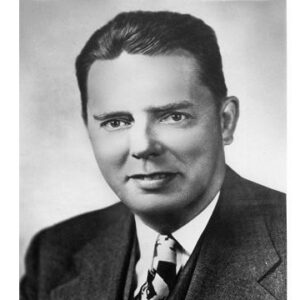Showalter, Philip Hench was a physician from the United States who won the Nobel Prize in Physiology or Medicine for discovering the hormone cortisone. He shared the honor with coworker Edward Calvin Kendall of the Mayo Clinic and Swiss chemist Tadeus Reichstein. Hench began his life by pursuing scientific studies. He earned a doctorate in medicine from the University of Pennsylvania. Hench began his professional career as an assistant at the Mayo Clinic and quickly advanced to the position of Head of the Rheumatology Department. In 1948 and 1949, the trio of Hench, Kendall, and Reichstein made a seminal discovery about the adrenal cortex’s hormones, their structure, and biological effects. Hench received numerous honors throughout his life and career, in addition to the Nobel Prize. Not many people are aware that, in addition to discovering cortisone, Hench had a lifelong fascination with the history and discovery of yellow fever. His disease-related research collection is still on display at the University of Pennsylvania.
Childhood & Adolescence
Philip Showalter Hench was born in Pittsburgh, Pennsylvania, on February 28, 1896, to Jacob Bixler Hench and Clara Showalter.
He received his formal education from neighborhood schools. He then enrolled at Lafayette College, Easton, where he earned a Bachelor of Arts degree in 1916.
Hench enlisted in the United States Army’s medical corps in 1917 but was transferred to the reserve corps to complete his medical training.
Hench earned a doctorate in medicine from the University of Pittsburgh in 1920. He interned at Saint Francis Hospital in Pittsburgh for a year following his doctorate degree before becoming a Fellow of the Mayo Foundation, the graduate school of the University of Minnesota’s Department of Medicine.
Career of Hench
Hench began his career at the Mayo Clinic in 1923 as an assistant. Within three years, he was promoted to the position of Head of the Rheumatic Diseases Department.
He studied at Freiburg University and the von Müller Clinic in Munich from 1928 to 1929. He was appointed an instructor at the Mayo Foundation in 1928. He was appointed Assistant Professor in 1932, Associate Professor in 1935, and Professor of Medicine in 1947.
Hench specialized in arthritis at Mayo Clinic. He made meticulous observations that led him to hypothesize that steroids could be used to treat rheumatoid arthritis. They aided in the alleviation of pain caused by the disease.
Between 1930 and 1938, he became acquainted with Edward Calvin Kendall, who had isolated several steroids from the cortex of the adrenal gland.
Together, the two decided to investigate the effect of one of the substances, Compound E, on patients with rheumatoid arthritis. However, they were unable to conduct the test successfully until 1948, due to the high cost of Compound E and the complicated and time-consuming process of isolating it.
Hench continued his scientific career following his military service during World War II. Hench, Kendall, and Swiss chemist Tadeus Reichstein successfully conducted experiments in 1948 and 1949 that led to the discovery of adrenal cortex hormones, their structure, and biological effects. In 1950, their work earned them the Nobel Prize in Physiology or Medicine.
Apart from his scientific work, Hench was a founding member and served as president of the American Rheumatism Association in 1940 and 1941.
Hench published numerous papers in the field of rheumatology during his lifetime, with a focus on Hygeia and the Annals of Rheumatic Diseases.
Along with his work on cortisone, Hench conducted research on yellow fever. He began documenting the history of yellow fever’s discovery in 1937. Whatever documents he gathered were donated posthumously to the University of Virginia by his wife, where they remain to this day as the Philip S. Hench Collection. Yellow Fever Collection of Walter Reed
Significant Works of Hench
Hench’s most important work occurred between 1948 and 1949. He co-discovered the hormone cortisone and its use in the treatment of rheumatoid arthritis with Kendall and Reichstein. This discovery of the adrenal cortex’s hormones, their structure, and biological effects was critical in developing a cure for rheumatoid arthritis.
Awards and Accomplishments
Hench received numerous awards for his contributions to physiology and medicine, including the Heberdeen Medal in 1942, the Lasker Award in 1949, and the Passano Foundation Award in 1950.
Hench, along with Kendall and Tadeus Reichstein, shared the 1950 Nobel Prize in Physiology or Medicine. The trio was recognized for their work on adrenal cortex hormones, their structure, and biological effects.
He was conferred with honorary doctorates by a number of colleges and universities, including Lafayette College, Washington and Jefferson College, Western Reserve University, the National University of Ireland, and the University of Pittsburgh.
He was elected to the American Medical Association and the American College of Physicians’ Fellowships. He is an honorary member of the Royal Society of Medicine in London as well as rheumatology societies in Argentina, Brazil, Canada, Denmark, and Spain.
Personal History and Legacies
Philip S. Hench married Mary Genevieve Kahler in 1927. The couple had four children together, two sons and two daughters.
Hench was also interested in music, photography, and tennis. He died of pneumonia on March 30, 1965, in Ocho Rios, Jamaica, while on vacation.
Estimated net worth
The net worth of Hench is unknown.


